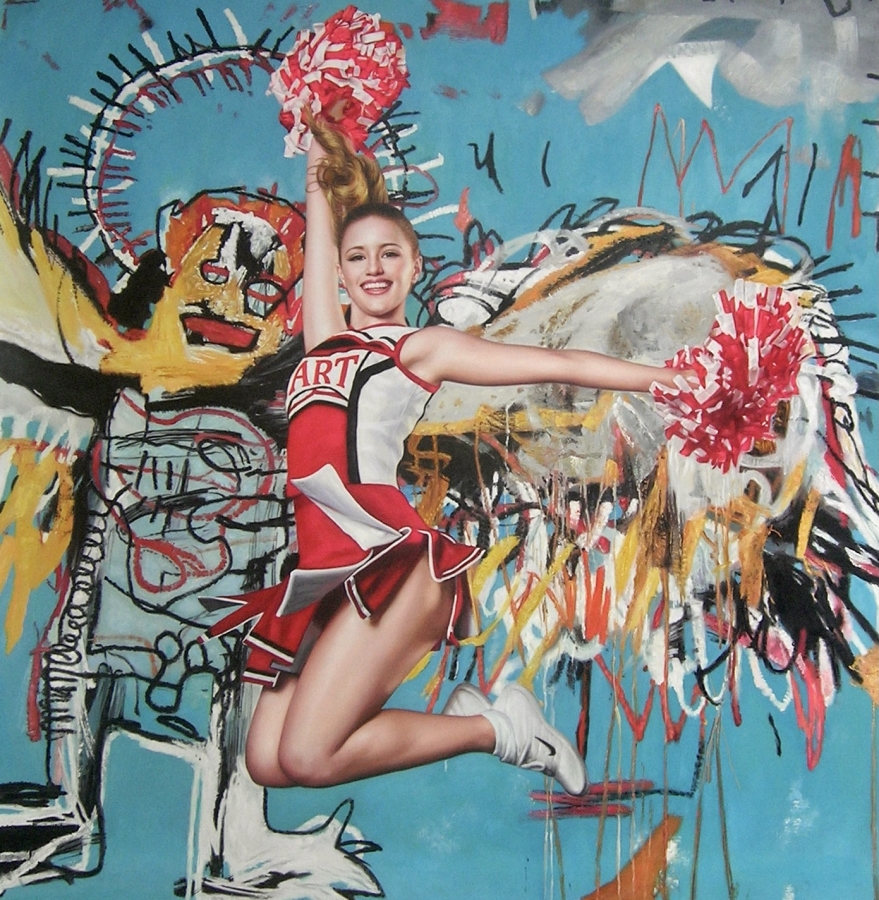Artist’s Biography
Marc Dennis is an American artist known for his hyper-realistic paintings that celebrate the subversive potential of art history, beauty and humor.
Interested in transformative possibilities Dennis merges various movements throughout the western art historical canon, with modern tropes to create fresh paintings rich with hype, intrigue, and metaphysical inquiry.
By co-opting celebrated paintings of centuries past Dennis’ works find new meaning in the hallowed lineage of Old Master painting to explore contemporary questions of cultural identity, social interaction, pictorial representation, and the consumption of images.
Marc’s artistic inspiration is drawn from his personal experiences and many adventures, ranging from accidentally starting a forest fire at age 7, to his days camping in the El Yunque rainforest as a middle-schooler in Puerto Rico to his somewhat troubled teen years, including multiple arrests, knife fights, a gun-related incident, a night in jail, and his day in court, to his highly influential time post-college days living in a teepee on Pine Ridge Indian Reservation in Wanblee, South Dakota, on the property of Richard Moves Camp, the Wicasa Wakan or Holy Man of the Oglala Lakota. His many adventures and travels include having lived in Israel, Rome, Venice, Florence, and Egypt; and spending three grueling weeks trekking uncharted animal trails in the Andes Mountains in Peru.
Born in Danvers, Massachusetts in 1972, Marc was one of five sons and grew up in and around Boston, Puerto Rico, New York, and New Jersey. His father was born and raised in Havana, Cuba in an orthodox Jewish family (often referred to as a “Jewban”), and immigrated to Dorchester, Massachusetts when he was 16 when Castro took control of the island. His mother was born and raised in Roxbury,
Bio: https://marcdennis.com/about.html
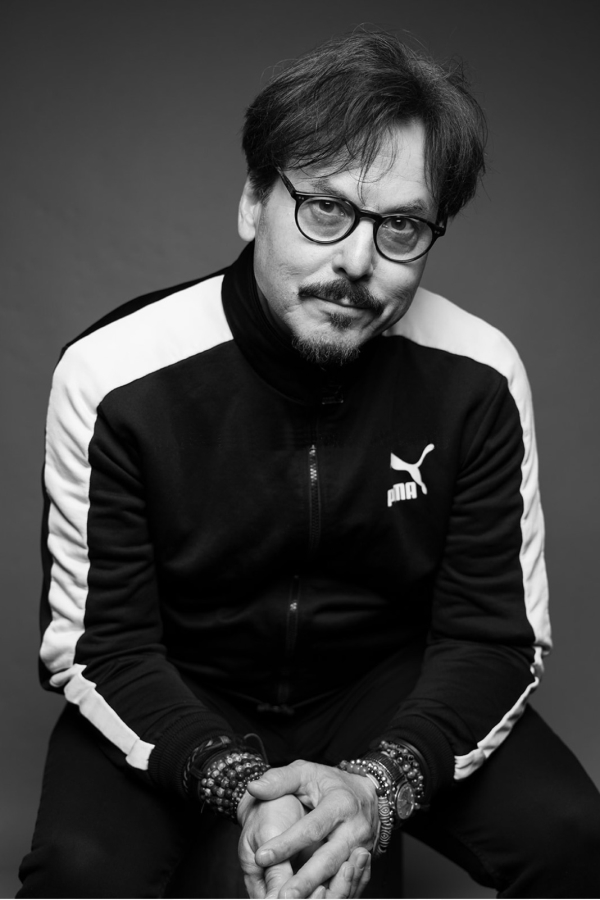
Interview Artist
Marc Dennis
By Carol Real
Can you describe your creative process and how you bring your artistic visions to life on the canvas?
My creative process involves observation, sketching, drawing, and painting. I take the time to thoroughly develop my ideas and translate them onto the canvas with meticulous attention to detail.
What are some of the main themes in your art?
I contemplate the concept of identity frequently and explore what pleasure means and how it can be portrayed in my art. Decadence is another theme I delve into, especially as it relates to the underlying ideas of the art market. These themes come together in my paintings, sometimes clearly, while other times requiring deeper contemplation.
Through your paintings, you create an alternate reality where art, history, nature, and pop culture intersect. What messages or narratives do you aim to convey through this intersection?
I aim to convey the message that life is good and that we can find beauty in our experiences while also maintaining a sense of humor. My art celebrates the joyful and humorous aspects of life.

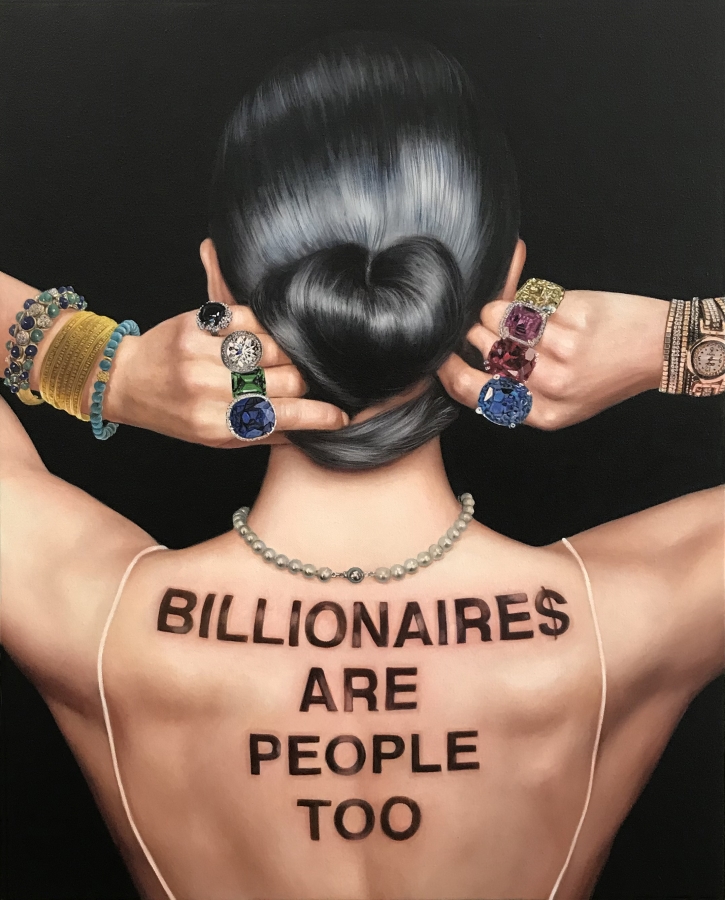
Can you elaborate further on your perspective on beauty?
Ever since high school, I have been eager to develop my technical skill set, which has eventually merged with my conceptual skills. This intersection has led me to my unique perspective on beauty, which I see as a series of wondrous and strange experiences rather than a concrete thing, place, or person. All of these elements have combined to inform my current hyperrealist style.
And speaking of history, your art blends various movements from the Western art historical canon with modern subjects. Can you discuss this artistic fusion and its significance?
I am deeply interested in paying homage to the Old Masters of my profession. As an artist, I meet them halfway, merging their work with mine to produce a sense of wonder and continuity in my paintings.
Caravaggio’s risk-taking and unique style have always fascinated me. His paintings continue to astound me, and he remains one of the greatest mysteries in European painting. Velasquez, on the other hand, created what I consider the most complex, thoughtful, and wondrous painting ever, Las Meninas. My favorite artist, however, is Titian, and Ingres is also among my favorites.
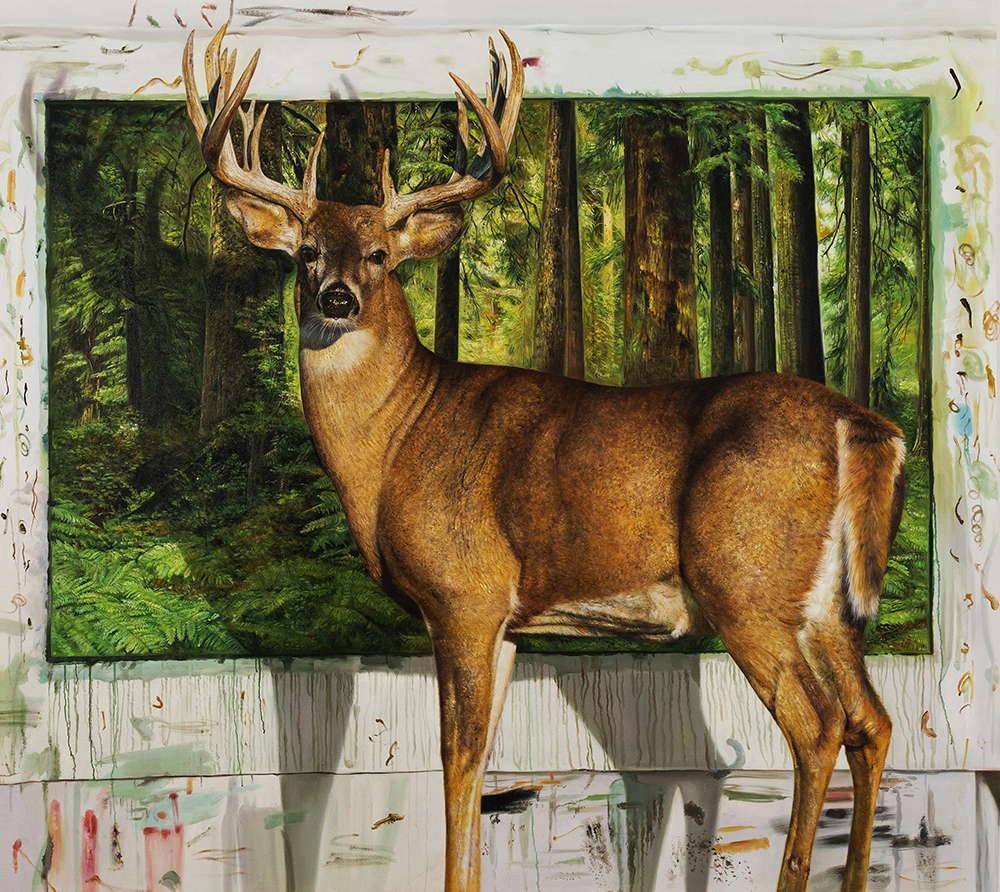
Could you share more about your interest in Northern European still-life masters, and how they contribute to your artistic vision?
I have a profound appreciation for flowers and the floral works of Old Masters. I draw inspiration from Dutch, Flemish, and Northern European artists to create my own interpretations of bouquets, infusing them with themes of life, love, and loss. I aim to provide a contemporary voice to this historical genre.
How has your experience as a parent influenced your art and choice of subject matter, in particular, your recent focus on identity art?
Becoming a father has brought a new dimension to my art. It has become more affectionate and humorous, with a touch of tongue-in-cheek and silliness. Watching cartoons like Gumball, Apple and Onion, and Bob’s Burgers with my children has influenced my use of color, compositions, and overall attitude, making it more relaxed.
Can you share any specific lessons or values you aim to impart to your children through your art and your experiences, especially in a world where identity and culture are evolving concepts?
In our family, we emphasize the importance of staying true to oneself, working hard, staying focused, being kind, and speaking one’s mind. I strive to nurture self-respect and honesty in my children. Thankfully, my kids are fun, driven, and loving, which makes this journey all the more rewarding.

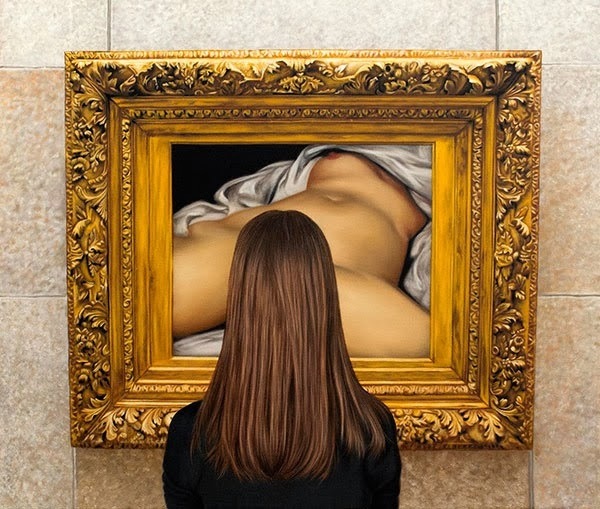
Your recent show, Three Jews Walk into a Bar, explores Judaism in a novel way. What led you to delve into this subject?
My Jewish identity and heritage inspired me to create this body of work. While I had explored various themes related to identity, I realized there was a lack of Jewish-themed works in my portfolio, which prompted me to explore this subject.
I believe that exploring Jewish themes in my art can contribute to a broader dialogue about Jewish culture and identity. I approach my Jewish-themed works with a sense of humor. They often merge both secular and Haredi (ultra-Orthodox) worlds, leading to different reactions from viewers. This duality aims to engage and challenge the audience.
The recurring motif of three Hasidic Jews observing the same painting seems to convey a message. What is the significance of this repetition?
The recurring motif of three Hasidic Jews looking at the same painting symbolizes the endurance of the Jewish people after the Holocaust and the role of humor in motivating them to persevere, as seen in the bar joke.
Humor can play a crucial role in art, even if it challenges viewers. It has the power to elicit emotional responses, provoke thought, and create meaningful connections with the viewer.
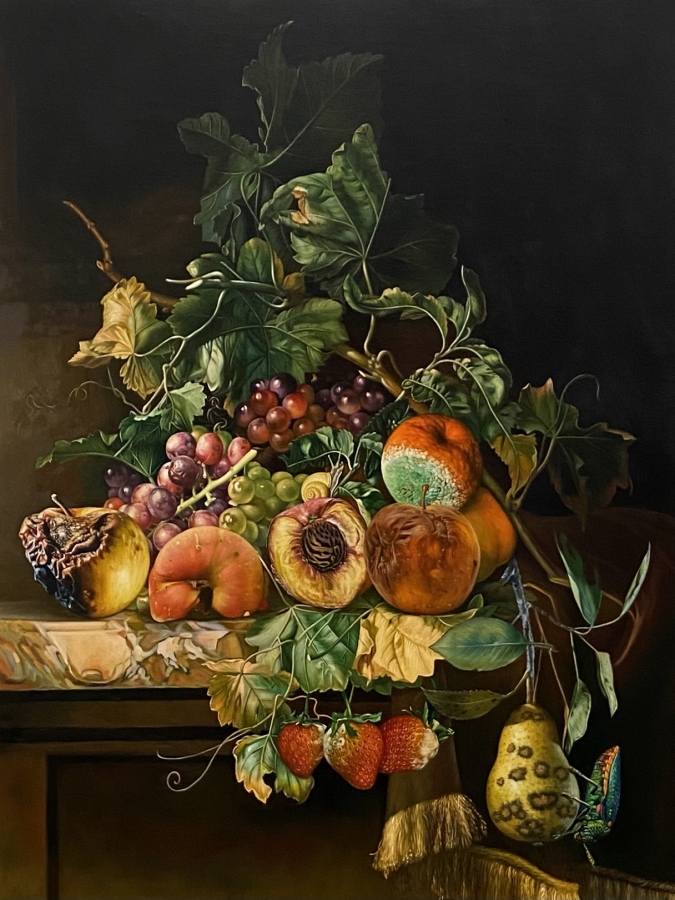
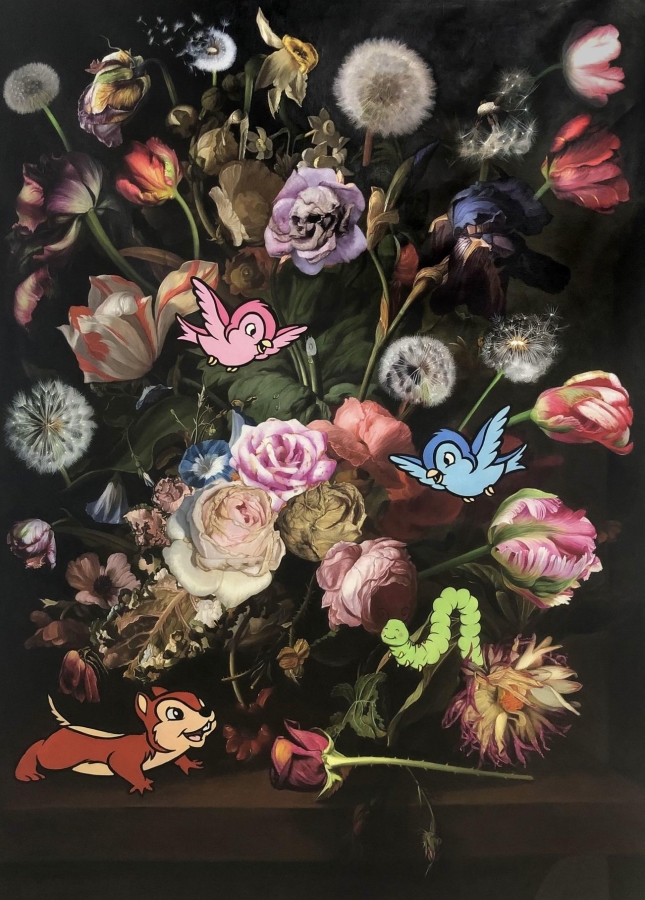
Given the rising specter of anti-Semitism, how important is it for artists to explore Jewish identity through their work?
While I cannot prescribe what artists should create, I firmly believe that artists should actively combat anti-Semitism and all forms of hatred and intolerance through their work. It’s essential to be vigilant and raise awareness about these issues.
You’ve had numerous solo exhibitions and international group exhibitions. Can you highlight some pivotal moments in your artistic journey?
My first solo exhibition in New York City at Hirschl and Adler Modern in 2008 was a turning point in my career. Additionally, attending my first Art Crush gala in Aspen, Colorado, in 2009–thanks to the invitation of John and Amy Phelan–was another pivotal moment that opened new doors for me.
Your unique style of hyperrealistic paintings sets you apart in the contemporary art world. How has this unique position influenced your artistic journey? How do you balance your artistic vision with the preferences of collectors?
I view every position as unique, and while I’m not entirely sure if I agree that I exist on the margins and at the center, I often find myself in a constant state of flux.
I never concern myself with what is trendy or what collectors might prefer. I paint what I’m passionate about and hope for the best. Staying true to my artistic essence is paramount to me.
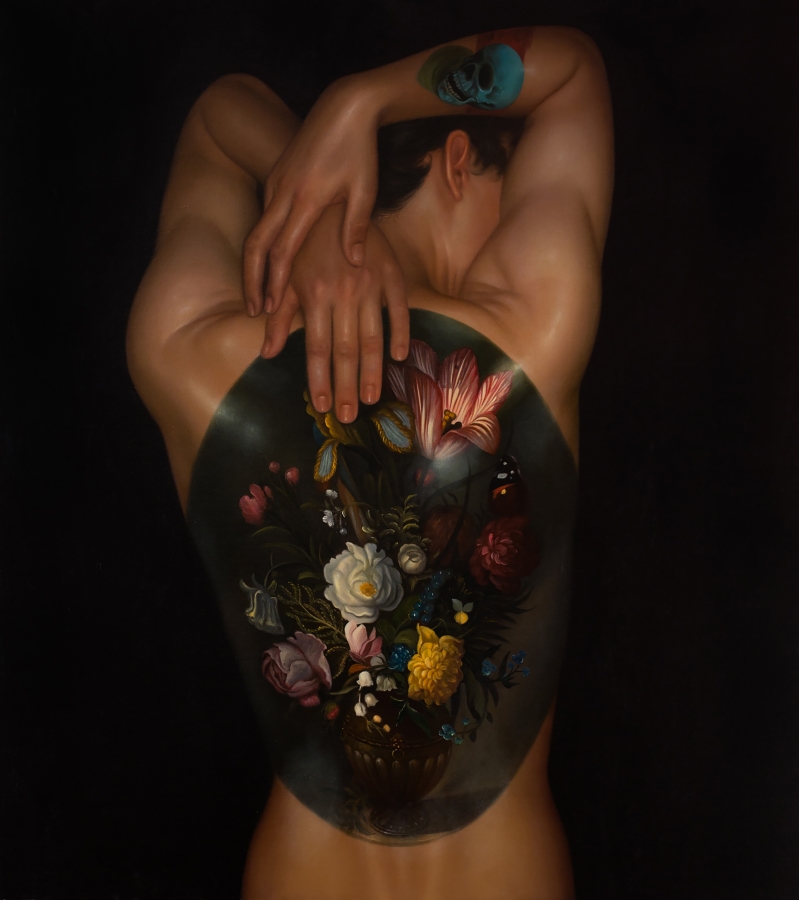
Your artwork is featured in various public collections and private collections. What do you think attracts people to your art?
I’ve often pondered what draws people to my art. I believe it’s a combination of factors, including my hyperrealistic style, the ideas I convey, my compositions, colors, and the potential for my work to spark curiosity and bring smiles to those who view it.
How do you respond to the perception that your art might be considered kitsch or camp without the allure of Mid-century artists like Andy Warhol or Roy Lichtenstein?
I’m comfortable with any interpretation of my art; perceptions vary, and that’s the nature of the art world. What matters most is the impact and engagement my art has with viewers.
Can you discuss the reception of your show at A Hug From The Art World and how it has impacted your career?
I am immensely grateful to Adam Cohen for believing in me and my series of paintings. The show’s opening was filled with people who had a great time, asked questions, hugged, and engaged in meaningful conversations. It was a truly blessed and memorable experience.
In a recent review of your exhibition, Three Jews Walk Into a Bar, Jerry Saltz mentioned that your paintings make viewers think about their behavior in museums. How do your paintings challenge the way people engage with art?
My art aims to encourage viewers to engage with art in a more open and unburdened manner. It allows people to smile at art and removes the fear of elitism, fostering a more relaxed and enjoyable art-viewing experience.
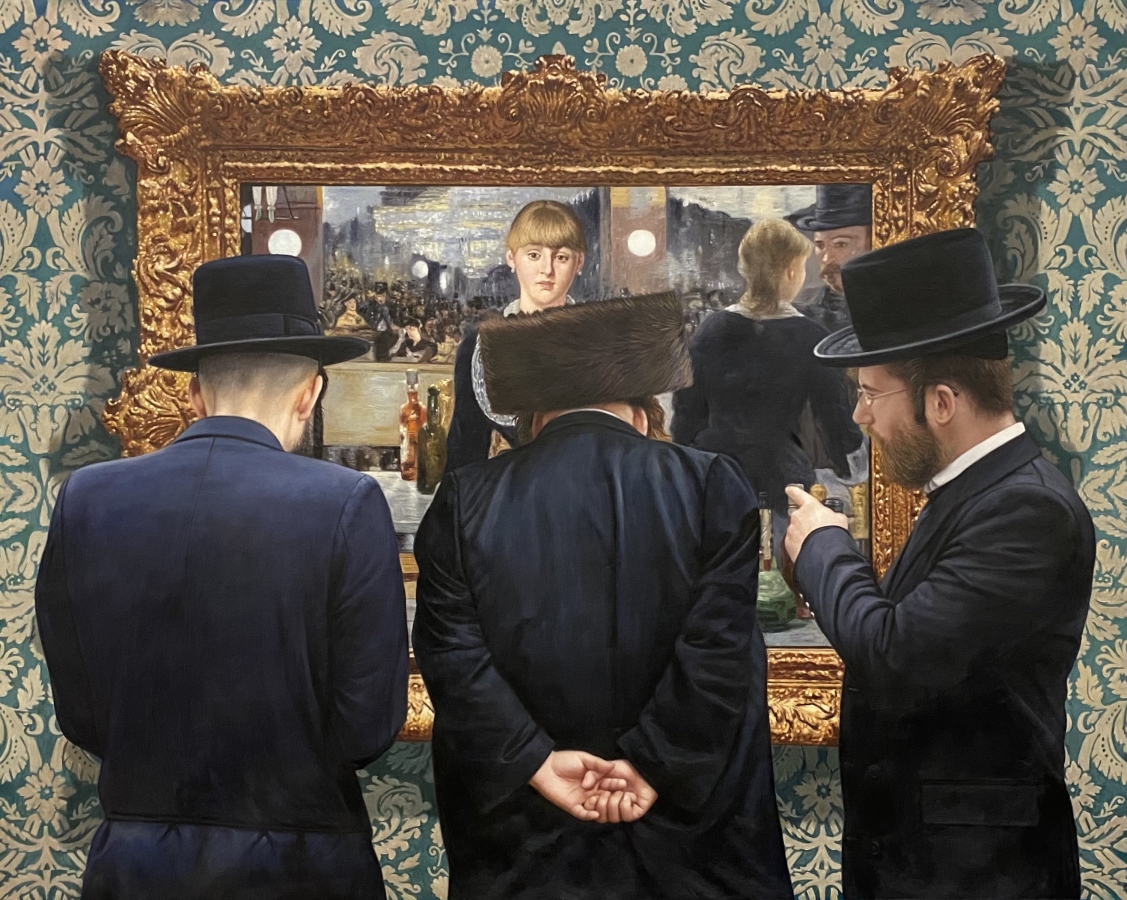
Do you think smartphones affect our appreciation of art?
The presence of smartphones and photography in museums has become a part of contemporary art viewing. I appreciate and even embrace this meta-narrative. Some of my work playfully pokes fun at the use of phones in what may be considered sacred art spaces.
Could you discuss your role as the director and head instructor of a career development program at the Art Students League?
I see myself as a mentor at heart. In my role at the Art Students League, I focus on helping artists develop their careers professionally, offering guidance and support to help them establish a strong foundation in their artistic journeys.
Do you have any advice for aspiring artists looking to make their mark in the contemporary art world?
Work hard, stay persistent, and remain focused on your artistic goals. Don’t burn bridges, and prioritize kindness and professionalism in your interactions with others.
What’s next for you in terms of your artistic projects and exhibitions?
I continue to forge ahead, always working towards new projects and exhibitions. Like the Energizer Bunny, I keep going, driven by my passion for art and creativity.
Image credits: All images courtesy of the artist
Editor: Kristen Evangelista
